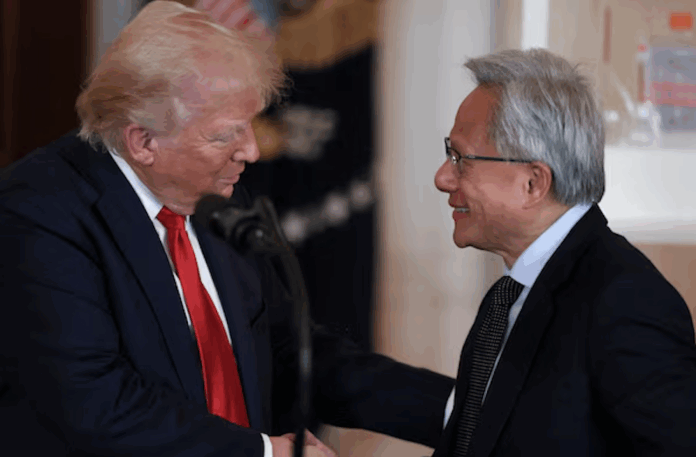Nvidia and AMD to pay 15% of their revenues from artificial intelligence chip sales to China directly to the US Treasury, according to multiple financial news outlets. The agreement, brokered in a direct meeting between Nvidia CEO Jensen Huang and President Donald Trump, marks a rare precedent in global tech trade.
For investors, the announcement raises two critical questions: how this deal may accelerate monetisation of a partially restricted market, and how both companies can preserve margins under a more stringent fiscal regime.
Revenue Access Secured Despite New Levy
Until now, Washington had heavily restricted exports of high-performance chips to China, limiting access to one of AI’s most lucrative markets. In exchange for the 15% revenue levy, Nvidia and AMD have secured the right to sell specific models tailored to US export requirements, Nvidia’s “H20” and AMD’s “MI308” chips.
According to The New York Times, the measure could generate over $2 billion for the US Treasury. For Nvidia, now valued at $4 trillion, and AMD, which is striving to expand its AI market share, this represents a strategic opening. While the levy will compress net margins on these sales, it secures access to a market that might otherwise have remained closed.
Stock Market Reaction and Investor Outlook
Markets are likely to view the deal as a pragmatic compromise: both companies give up a share of revenue but lock in a sales volume that could sustain near-term growth. Share price reaction could remain positive, especially if unit sales volumes offset the impact of the levy.
However, investors should closely monitor two metrics:
- The trajectory of operating margins in AI segments sold to China.
- Any potential policy response from Beijing, which may alter import rules or accelerate support for domestic chipmakers.
In the background, US trade policy continues to harden, with increased semiconductor tariffs and financial incentives aimed at reshoring manufacturing.


